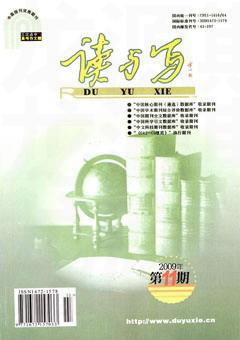Influence of Cultural Connotation of Idiomon the Acquisition of English Language
張 靜
Abstract:Idiom can reflect the cultural features of a nation. This paper is from the view of Chinese-Western cultural contrast to discuss about the influence of cultural connotation of idioms on the English language learning for Chinese students.
Key words: cultural connotation;idiom;contrast
中圖分類號:H319 文獻標識碼: A文章編號:1672-1578(2009)11-0030-01
1 Introduction
Language is the carrier of culture.
What is culture? “Culture is a complex entirety, which includes knowledge, faith, art, law, morality, custom, and also any other abilities and habits acquired by human beings as social members.” (Tylor, 2003. P380) Then what is idiom? Oxford Advanced Learners English-Chinese Dictionary(6th Edition) explains that “An idiom is a phrase whose meaning is difficult or sometimes impossible to guess by looking at the meanings of the individual words it contains.”
2 Documents review
For a long time past, peoples recognition to language was affected by the view of instrumentalism, which is only to notice the instrument of language system itself, but to neglect the other factors that restrict language, such as culture. Sapir (Sapir, 2003. P20) mentioned: “Parole is a kind of non-instinct, obtainable, ‘cultural function.” Learning language meanwhile must learn culture, and vice versa. Generally speaking, intra-cultural communication has nothing problem, while as to intercultural communication, the problems of comprehension and expression co-exist. Idiom acquisition is just a striking presentation of this pair of contradiction in cross-cultural communication. As to the study of idioms, it involves the aspects of translation, its own features of idioms, cultural contrasts between the eastern and western countries, etc. The researchers do some quantity analysis or quality analysis by various methods; for example, they do it from the view of pragmatics, lexicology, cross-cultural communication, teaching methods, translation, etc. These results produce a wide realistic and social significance for both the development of linguistics itself and the specific practices in communication.
3 Three types of relations about idiom
Idioms, in the aspect of presenting cultural features, can be divided into three kinds of relations: corresponding relation, semi-corresponding relation, and non-corresponding relation.
(1)Corresponding relation refers to both of the English and Chinese idioms are consistent and corresponding not only in meaning but also in image. In this condition, both of the idioms can be translated into each other, that is to say, one nations idiom can be translated into another ones. For example, “burn ones boat” can be translated as “破釜沉舟”. Although their historical allusions are different, the two idioms represent the same meaning, which is to do something that makes it impossible to return to the previous situation later. Their image and figurative meaning are so close. For another example: “walls have ears” can be translated as “隔墻有耳”. The two idioms are all used to warn people to be careful what they say because other people may be listening. In addition, some idioms of a language are borrowed from another language, Some English idioms, such like “an eye for an eye, a tooth for a tooth”, “armed to the teeth”, has been transplanted to China. Some others, such as “to lose ones face”, “to save ones face” are from China.
(2) In the semi-corresponding idioms, some have the same meaning but different figures of speech, so the images are different, too. Besides, some have the close meaning, but should be used in different occasions or contexts; some others are only similar in literal meaning, but the connotation are far more different, meanwhile having different colors of sense, so they only express a part of relevant cultural feature. For instance, to express “both of the two persons have the same shortcoming or fault”, or “blaming other person for something which in fact he himself also has made the same mistake before”, the corresponding English idiom is “the pot calls the kettle black”, while Chinese one is “五十步笑百步”. But, lots of English-Chinese dictionaries appear such mistakes in translation. For instance, this idiom mistakenly translated as “明珠暗投”, in fact they are different. Literally their images and actions are consistent, such wrong translation is the result of literal corresponding, which violates the basic principle of translation.
(3)As to the idioms of non-corresponding relation, if only see the literal meaning, all of them would be wrong. There is no similarity in meaning, usage and cultural feature. It is true that some idioms literally have the same meaning and image, which is so confused that easily forms a trap. For example, “eat ones words” easily equals to“食言”, but the real meaning is “to admit that what you said was wrong”.
4 Conclusion
All in all, learning language is just learning culture, to understand the cultural connotation of idioms shows its great realistic significance: 1> it can improve the learners ability of using English language, can enlarge their knowledge scale of language, and also enrich their effective vocabulary; 2> it can help the learners to know some contents of the cross-cultural studies, so as to widen their field of vision, and also to foster their interests in foreign culture. These just are the value of studying it.
Bibliography:
[1]Sapir, Edward.On Language[M]. Beijing: The Commercial Press, 2003.
[2]Tylor, Edward. Original Culture[M]. Beijing: The Commercial Press, 2003.
[3]Wehmeier, Sally ed. Oxford Advanced Learners English-Chinese Dictionary (6th Edition)[J]. Oxford: Oxford University Press, 2004.

